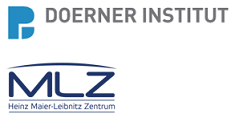Speaker
Description
We present analysis of seven samples from early modern English wall paintings, most dating to 1550-1660, when decorative wall paintings were used to convey status and cultural knowledge (Fig. 1A, 1B). The selection of pigments has implications for the affordability, accessibility, and sociocultural significance of the paintings. Identification of pigments and degradation products is also important for interpretation of the original colours. In the early 1600s, synthetic blue verditer (Cu$_2$CO$_3$(OH)$_2$) emerged as an important new affordable blue pigment alongside widely used but precious natural azurite, but other copper blues and greens were also in use.
While most samples were identified as verditer or natural azurite, a subset did not fit either profile. In many, elemental analysis showed colocalisation of copper and chlorine; while in some cases it was straightforward to assign these particles as degradation products, in other cases they were so widespread that the possibility of intentional use of copper chlorides as pigments was considered (Fig. 1C).
Further analysis of the sample subset that were not conclusively characterised as verditer or azurite was then carried out as part of the Heritage BAG at ESRF. First, µ-PXRD mapping of seven historical samples, selected for their unusual morphology and/or high chlorine content, was carried out. Additional experiments are planned at ESRF to address the detection and formation of copper hydroxychlorides in verditer/rouaite paint samples using µ-XRF and XANES.
Using µ-PXRD, we identified specific mineral phases (Fig. 1D). Several samples contained copper hydroxychlorides in the absence of carbonates, supporting the use of atacamite and other polymorphs as pigments in the wall painter’s palette.
Most significantly, rouaite, a basic copper nitrate, was identified in one sample for the first time. The localisation of rouaite and a basic copper carbonate in the paint layer stratigraphy suggests that rouaite is susceptible to degradation in the presence of chlorine, which may be one explanation of its infrequent identification in historical samples. Ongoing work in our lab investigating historical synthetic procedures for blue verditer synthesis has identified rouaite as a major undesirable byproduct, and the discovery of it in a wall painting sample is important evidence for a specific synthetic procedure as well as the unreliability of verditer production during this period.
We have demonstrated the complexity of the palette used in medieval and early modern England and the difficulty of conclusively identifying pigments and degradation products by visual examination and elemental analysis alone. This attests to the importance of multimodal analytic procedures and the utility of synchrotron radiation in the study of cultural heritage samples.

